Great rhombidodecahedron
| Great rhombidodecahedron | |
|---|---|
 | |
| Type | Uniform star polyhedron |
| Elements | F = 42, E = 120 V = 60 (χ = −18) |
| Faces by sides | 30{4}+12{10/3} |
| Wythoff symbol | 2 5/3 (3/2 5/4) | |
| Symmetry group | Ih, [5,3], *532 |
| Index references | U73, C89, W109 |
| Dual polyhedron | Great rhombidodecacron |
| Vertex figure | 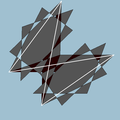 4.10/3.4/3.10/7 |
| Bowers acronym | Gird |
In geometry, the great rhombidodecahedron is a nonconvex uniform polyhedron, indexed as U73. Its vertex figure is a crossed quadrilateral.
Related polyhedra
It shares its vertex arrangement with the truncated great dodecahedron and the uniform compounds of 6 or 12 pentagonal prisms. It additionally shares its edge arrangement with the nonconvex great rhombicosidodecahedron (having the square faces in common), and with the great dodecicosidodecahedron (having the decagrammic faces in common).
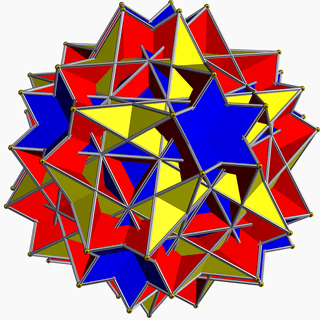 Nonconvex great rhombicosidodecahedron |
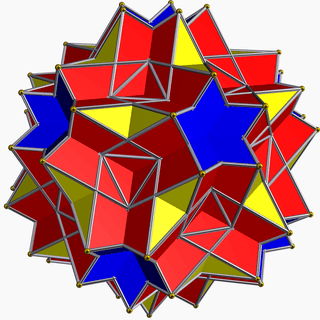 Great dodecicosidodecahedron |
 Great rhombidodecahedron |
 Truncated great dodecahedron |
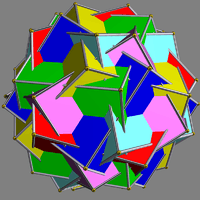 Compound of six pentagonal prisms |
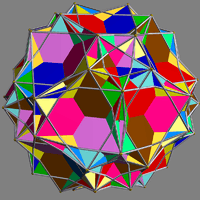 Compound of twelve pentagonal prisms |
Filling
There is some controversy on how to colour the faces of this polyhedron. Although the common way to fill in a polygon is to just colour its whole interior, this can result in some filled regions hanging as membranes over empty space. Hence, the "neo filling" is sometimes used instead as a more accurate filling. In the neo filling, orientable polyhedra are filled traditionally, but non-orientable polyhedra have their faces filled with the modulo-2 method (only odd-density regions are filled in).[1]
 Traditional filling |
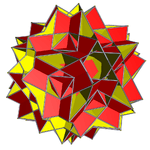 "Neo filling" |